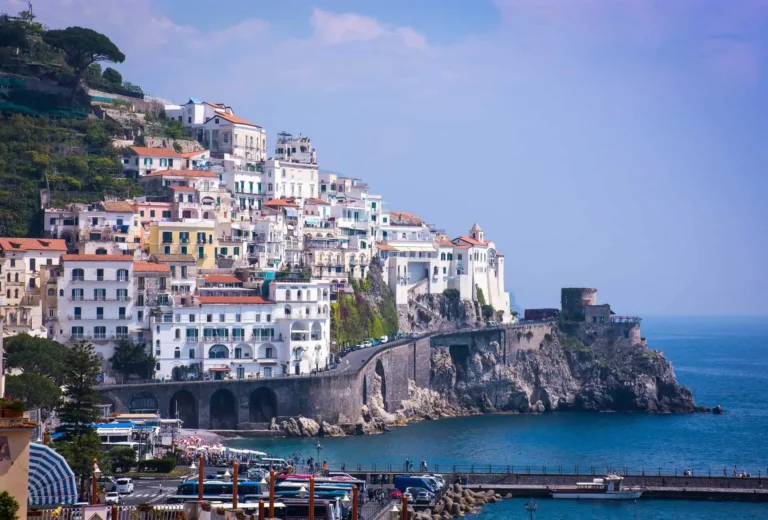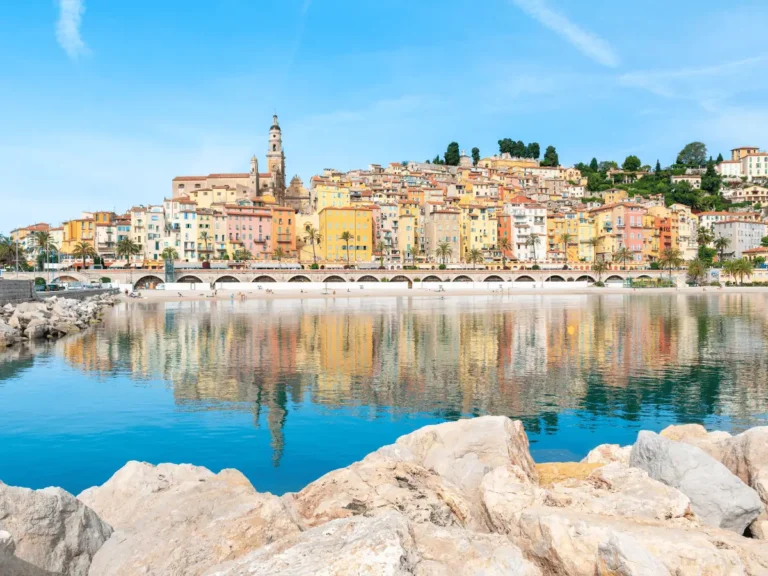Contents
Russia-Ukraine War: The (Latest) Global Crisis Disrupting Everything
- Impact on Food
- Impact on Energy
- Impact on Finance
- Trade Disruptions And Transport Costs
- Fewer Ukrainian & Russian Tourists
The Increase In Fuel Prices And The Domino Effect
The Conundrum Of Increasing Flight Prices
The Impact Of Increasing Gas Prices On Tourism And Travel
The Importance Of Addressing Consumers’ Concerns
How Can Travel Companies Prepare For Increasing Prices And Make Travel More Appealing To Travelers?
Executive Summary
As gas prices increase, in part due to the Russia-Ukraine war, many in the travel industry are faced with the question of just how much this, as well as the ongoing conflict will affect the rest of 2022 and beyond.
This paper is aimed at exploring the increase in fuel prices and the domino effect it has on the tourism industry as a whole. Including the role that the Russia-Ukraine war has played in regards to food and energy volatility. In addition, we attempt to identify critical points for industry players to consider, such as: how fuel prices will influence travel, the effect it has on airfare, the impact on travel brands, key learnings from the pandemic, the importance of addressing customer concerns, and how travel companies can not only prepare for these increases but how they can find a way to avoid hard knocks from this inflation.
While there is no doubt that the increase in gas costs and the conflict between Russia and Ukraine will affect tourism – and the cost of travel in general – there are still ways to brace for impact and reduce long-term effects.
We have collected information from industry experts and studies conducted in the post-pandemic climate to ascertain how travel-related companies can position themselves for success and avoid the domino effect, as well as how they can make travel more appealing to customers.
Key insights:
- The Russia-Ukraine war is causing major uncertainty across industries and economies.
- The war has significantly increased the cost of food and other commodities and is amplifying inflation.
- We are on the brink of a global debt crisis. Even before the Russia-Ukraine war, countries were spending on average 16% of their export earnings on servicing debt obligations.
- The loss of both Russian and Ukrainian tourists will be felt widely, with Russia being the world’s 11th-biggest source of tourists, and Ukraine the 13th.
- The costs of fuel are at an all-time high, averaging 4.86 per gallon in the United States, with some states blowing up past the $6.00 mark.
- Gas prices have replaced the pandemic as a traveler’s primary concern.
- Airline tickets have increased by over 11% since 2020 – well above the annual average of 4.03%.
- Addressing consumer concerns needs to remain at the forefront of industry players’ minds when coming up with actionable solutions.
- Travel companies need to develop personalized and one-of-a-kind offers, always considering that costs are rising not only for travel but also for day-to-day life.
Introduction
Although travel costs are typically prone to rise and fall, the state of the travel industry has not been eased by the war in Ukraine and the skyrocketing prices of food and energy. Not to mention the global recession and lingering consequences of the Covid-19 pandemic – since, for the most part, many businesses are still recovering from the latter.
How is the Russia-Ukraine war disrupting economies and businesses? What is the long-term impact of this pressure on businesses and consumers? Moreover, how can the travel industry overcome them?
With so many long dips and short rises, it is easy to adopt a mentality of capitalizing on advantages when they present themselves. However, the best course of action may be to concentrate on the problem and how to adapt to it instead of pretending it does not exist.
Air Doctor’s core mission is to provide healthcare for travelers while abroad, but travelers are facing an increasingly challenging landscape that has made travel less appealing. We decided to examine the impact of the increase in gas prices and its effect on tourism and found some exciting results and possible ways businesses can overcome the problem.
Russia-Ukraine War: The (Latest) Global Crisis Disrupting Everything
Russia invading Ukraine is the greatest humanitarian crisis in Europe since World War II. As in any global crisis, uncertainty is high.
While businesses deal with the immediate effects, we cannot deny the fact that this is likely to bring about fundamental disruptions that will shape the future of the landscape.
As uncertainty plagues decision-makers, scenarios from business experts provide guidance.
A recent McKinsey article framed potential scenarios according to the duration and scale of disruption and policy responses, as well as how each scenario will likely shape the economic outcomes of the crisis (McKinsey 2022). See below.
Scenario 1B was dependent on hostilities ending within a few weeks of the article being published (17 March 2022). So that leaves scenarios 2A & 3B.
In scenario 2A, hostilities end in the second half of 2022.
And sees continued energy exports from Russia to Europe, in addition to the rebound of consumer confidence which brings about a surge in demand, for services in particular. As a result, businesses would respond with additional investments and hiring.
Another aspect within this scenario that’s worth noting, is how new concerns about energy insecurity cause sentiment on energy policy to shift. This means businesses and governments make near-term investments in additional fossil fuel capacity to ensure resilience, as well as accelerate investment in sustainable energy.
In addition, prices of energy, food, and other commodities fall back as a resolution to the war comes into view. And the effects of energy shocks recede by early 2023. Expectations of inflation remain elevated relative to pre-pandemic norms but are stable, indicating that inflation has been contained.
In scenario 3B, the conflict is drawn out which only intensifies the crisis and its effects.
As a result, sanctions on Russia are extended, and European gas prices more than double from their already high levels.
Eurozone headline inflation spikes to over 7% on the year.
Europe can partially replace some of the natural-gas shortfalls by buying on the spot market and also by slowing the shift away from coal.
While nations producing and consuming can build new liquefied natural gas (LNG) export/import in time – in the near term, higher prices, lower incomes, and reduced consumer spending result in some demand destruction.
Ultimately, this scenario combined with the loss in consumer confidence, tips the eurozone into recession in 2022 and 2023. Eases in inflation will only come about in mid-2023, when the economy suppresses demand and energy prices fall from their peak.
By the beginning of 2024, GDP growth resumes with consumer spending and business investment beginning to recover, even as minor conflict with Russia and Ukraine continues. As 2024 ends, this scenario sees employment finally regaining its ground to 2019 levels, and growth shifts back to pre-Covid-19 long-term trends.
Businesses should plan for both of these scenarios to cover all bases.
Regardless of which scenario plays out, there’s no doubt that the conflict is a major blow to the global economy that will simultaneously hurt growth and raise prices (McKinsey 2022).
It’s clear that the conflict between Russia and Ukraine is causing a devastating ripple effect across the globe. An International Monetary Fund article examines exactly how the conflict is reverberating across the world’s regions and details that the impacts will flow through 3 main channels:
- Increased prices for commodities like food and energy, will amplify inflation levels, and as a result, will undermine the value of incomes and weigh heavily on demand.
- Economies of nearby countries will face a more pronounced upheaval with regards to trade, supply chains, and remittances, in addition to an unprecedented surge in refugee numbers.
- Diminished business confidence and an increase in uncertainty amongst investors will influence asset prices, in turn constricting financial settings and possibly bringing about capital hemorrhaging from emerging markets (International Monetary Fund 2022).
As a result, commodity prices are reaching record highs across the board. See charts below.
Impact on Food
The impacts of the Russia-Ukraine war are being felt across the globe because of the countries’ significant contributions to food and energy supplies.
On 8 April 2022, the United Nations Food and Agriculture Organization (FAO) published its third consecutive record food price index (United Nations Food and Agriculture Organization 2022). It shows that food prices are 34% higher than this time last year and have never been this high since FAO started recording them. See chart below.
In relation to food, there are added production and export challenges, which are already associated with reduced availability and price increases.
The fact of the matter is that food and energy import bills are already at record levels, this is according to the UN’s brief on Global Impact of War in Ukraine on Food, Energy, and Finance Systems, and it seems inevitable that these will continue to rise (United Nations 2022).
Added to the fact, that since many food producers aren’t able to access the agricultural inputs required, the impact of current market disturbances may be felt through 2023. Ultimately, this situation may worsen if countries react by closing food markets. This will set off a domino-effect of trade restrictions and export bans, with potentially catastrophic consequences (United Nations 2022).
Impact on Energy
The UN’s brief further examines the impact on energy systems.
Stating that energy markets were already tight before the start of the crisis, as a result of strong consumer demand and high GDP growth in 2021. Although natural gas and crude oil were still hovering around 50% above their level at the beginning of the year, they’ve experienced volatile trading sessions after key announcements since the beginning of the conflict between Russia and Ukraine. See chart below.
This increase may lead to counteracting effects in the long-term. It may shift investments back into fossil fuel-based energy generation, or it may accelerate the transition towards alternative energy sources. At the moment, there’s no knowing which trend will prevail (United Nations 2022).
Impact on Finance
As the UN’s brief brutally stated: We are on the brink of a global debt crisis. Even before the Russia-Ukraine war, countries were spending on average 16% of their export earnings on servicing debt obligations – and Small Island Developing States are spending more than twice this. To put this into context, by comparison, after the Allied Powers restructured Germany’s debt in 1953, debt servicing payments never exceeded 3.4% of export revenues in any year.
The figure included in the brief depicts the cost of debt servicing rising for developing countries. (External debt service as a share of exports, developing countries by income group) (United Nations 2022). See chart below.
Trade Disruptions And Transport Costs
The brief also analyzes how the war is increasing ongoing disruptions to global supply chains and logistics – ultimately contributing to further delays across the global sea freight transportation system. Not to mention that port congestion remains a major factor to elevated freight prices in many shipping segments.
Airspace closures, contractor uncertainty, trade restrictions, and security concerns are complicating trade routes going through Russia and Ukraine – a key sector of the Eurasian Land Bridge – although it’s not clear yet to what extent this will reduce commodity supplies coming from Russia and Ukraine.
Spot freight rates and rates to charter container ships are both at historical highs.
General simulations on the impact of higher container freight rates on inflation, undertaken by UNCATD, still hold – predicting an additional increase in consumer prices by about 1.5 percentage points in comparison to pre-Covid (United Nations 2022). See chart below.
The brief also states that higher bunker prices – the charge shipper’s incur to compensate for fluctuating fuel prices – has a bearing on transport costs for all modes of transport. These prices have been significantly affected and today are about twice the average of the five years preceding Covid (United Nations 2022).
Fewer Ukrainian & Russian Tourists
There’s also another factor related to the conflict that seems to be less explored by players in the tourism sector, and that’s the loss of both Russian and Ukrainian tourists – which will be felt widely.
An EIU whitepaper titled: How the war in Ukraine will affect tourism, has noted the impacts. Prior to the pandemic, Russia was the world’s 11th-biggest source of tourists, and Ukraine the 13th. Based on data collected from the World Tourism Organisation, the EIU has estimated that the two countries accounted for 75m tourist departures – 5% of the global total in 2019 (EIU 2022).
And when it comes to tourism expenditure, Russian and Ukrainian contributions were even more significant – making up a combined US$50bn (approximately 8% of the world total) in 2019 – with Russia alone being the world’s seventh-biggest spender (EIU 2022). See charts below.
Most Russian and Ukrainian tourists will disappear from Europe as war and sanctions hit travel routes and the two countries’ economies (EIU 2022).
All these factors brought about by the Russia-Ukraine conflict are heavily impacting economies and sectors – particularly travel.
Increased Gas Prices And The Domino Effect
Gas prices are at an all-time high, according to the US Energy Information Administration, with retail gasoline prices averaging $4.86 per gallon in the United States (US Energy Information Administration 2022). According to the most recent data from AAA, gas prices in the US hit a new record, and that’s without adjusting for inflation (AAA 2022). The highest average price is in California: $6.40 – with nineteen other states already surpassing the $5 mark. See chart below.
Other countries across the world are experiencing even higher gas prices since American gas prices are among the lowest in industrialized nations because the federal government levies very few taxes on fuel (USNews 2022).
The consensus among experts is that prices are likely to stay here for a few months. A projection from JPMorgan predicts that the US could surpass $6.20 per gallon as the national average, by August (Business Insider 2022).
While the ongoing war with Russia and Ukraine plays a significant part in the recent increase in gas prices, it is not the only cause. As Covid-19 restrictions began to ease across the globe, the demand for fuel started to rise once more. Consequently, costs increased, particularly for oil, and the tendency was for prices to keep increasing in the following months (US Bureau Of Labor Statistics 2020). See chart below.
However, Russia’s military action has unquestionably worsened the situation. With Russia being one of the world’s top oil producers, there was an overall concern that production might be disrupted (World Economic Forum 2022).
This had an immediate effect since supply and demand impact constant fluctuations in oil prices.
Global sanctions against Russia might just be what it takes for oil prices to stabilize and drop again. For now, as the Russia-Ukraine war rages on, prices will likely continue to trend upward.
The problem with the war and subsequent rising gas prices is that it creates a domino effect that impacts every aspect of transportation and goods, as we’ve seen above.
While this is partly due to the ongoing war in Ukraine, Covid-19 also played a role. With the pandemic having initially brought about a substantial dip in fuel demand as travel picked up, so has the need for fuel.
A New York Times article delved into the fact that jet fuel supply is constrained, and prices have spiked. The Energy Department said that inventory levels for East Coast jet fuel stood at 6.5 million barrels in mid-April 2022 – the lowest since the agency started keeping track in 1990 (New York Times 2022).
Global head of energy analysis at Oil Price Information Service, Tom Kloza said, “Jet fuel has made the most parabolic move I’ve ever seen for any transportation fuel. It’s just insane.” (New York Times 2022)
As a result, airfares have gone up.
At the beginning of 2022, the average cost of a round-trip domestic flight was $235, according to a Consumer Airfare Index Report by Hopper – an app which tracks prices for flights and hotels (Hopper 2022). Since then, ticket prices have increased by 40% to $330. An economist at Hopper, Adit Damodaran said, “Not only are the current prices that travelers are paying extremely high compared to historic price data, but the rate of increase has also been particularly steep since January.” (Hopper 2022)
The economist also said that besides the rising cost of jet fuel, the surge in airfare can also be attributed to typical seasonal patterns and the fact that demand was suppressed at the beginning of the year as the Omicron coronavirus variant spread. Some airlines have also cut flights in response to persistent staff shortages, creating greater competition and driving up fares for the flights that remain. (Hopper 2022)
The Conundrum Of Increasing Flight Prices
While energy prices are undoubtedly pressuring airlines to increase airfares, the situation is not as straightforward as it seems, especially when considering customers’ demands.
The largest operating costs for airlines are labor and fuel expenses, as broken down by Investopedia (Investopedia 2021). So, naturally, increases in fuel prices have a direct impact on airlines and flight prices. When gas prices are up, airlines are forced to adjust. And as stated in the previous section, airfares are already trending high. According to a US inflation calculator, airline tickets have risen by more than 11% since 2020 (US Bureau of Labor Statistics 2022), which is well above the average of 4.03% a year – due to jet fuel prices being now more than 80% higher than a year ago, according to the International Air Transport Association (EIU 2022) – but it’s unclear whether prices will continue to follow this trend in energy costs.
Ticket prices are determined by operational costs but also hinge on consumer demand. Generally, airline companies tend to protect themselves from jet fuel price spikes by buying large quantities in advance, and when fuel prices are low – even when ticket prices are low – their price will rise if consumer demand is high.
Non-essential air travel will take the most significant blow, and it’s clear that travelers are now thinking long and hard before taking to the skies.
The surge in prices doesn’t only have implications for airfares, but also the already high costs of global shipping – as Amazon announced plans to impose its first “fuel and inflation surcharge” for sellers whose goods it stores and delivers (New York Times 2022).
It goes without saying that the broader transport sector is undoubtedly impacted – restating the UN’s brief that increased prices have a bearing on transport costs for all modes of transport (United Nations 2022).
A piece from Teleroute further solidifies that the Russia-Ukraine conflict has led to an increase in the cost of diesel, and as a result is directly affecting the transport sector as a whole – forcing it to take measures to alleviate high costs (Teleroute 2022).
The piece examines the price of oil – and therefore fuels – as one of the primary concerns for the road transport sector. An issue which has become for relevant as of late since the high prices on both diesel and gas prices.
Fuels excessive rise is affecting truck drivers the most, but has repercussions that go beyond the logistics sector. The cost of transporting goods has increased and is reflected in the price consumers need to pay for meat, milk, or bread purchased at the supermarket. As such, this is further echoed across the entire distribution chain (Teleroute 2022).
So how will these increased prices affect tourism? How will it change travel habits? And what can travel-related companies do to plan for those changes?
The Impact Of Increasing Gas Prices On Tourism And Travel
A study done by Susanne Becken shows that the tourism industry is clearly dependent on oil, primarily due to its essential transport aspect (Becken 2010). Added to the fact that there’s a range of particularly vulnerable tourism activities, such as recreational activities that rely heavily on fossil fuels, for instance: jet boating and boat cruises – as researched in another paper by Becken & Simmons (Becken and Simmons 2002).
While it is evident that energy prices will affect the industry, the effects may be more noticeable in terms of the types of vacations people take, and not necessarily bring about a considerable scale reduction in travel in general.
According to a survey published by Longwood’s International about American traveler sentiment, 38% of travelers say that gas prices will affect their travel plans during the next six months, with only 18% saying that rising gas prices will have no impact on their travel plans (Longwoods International 2022). By comparison, only 20% of travelers said that Covid-19 had any impact on their decision-making process. But one could argue that much of the affected travel during Covid-19 was air travel since many travelers turned to road trips as a way to satiate their travel bugs (Longwoods International 2022).
Gas prices replaced the pandemic as travelers’ primary concern, and similar to during the peak of Covid restrictions, travelers are likely to come up with new ways to spend their vacations (Longwoods International 2022).
Longwood’s International CEO, Amir Eylon, has said, “This increased expense might limit the number of trips travelers take and lead to selecting destinations closer to home, or reducing their spending on items like meals, accommodations, and souvenirs as they travel.” (Longwoods International 2022)
More people are opting for destinations closer to home in an attempt to cut back on expenses. What’s more, distant destinations that come with extra costs, more red tape, and higher investments are not as appealing to tourists during the global crisis. (Longwoods International 2022)
There are also specific sections of tourism that will be impacted, for instance, RV & van rentals – which saw a considerable increase in popularity during the pandemic. Road trips are still trending, but gasoline prices are too demanding to stay on par with the growth rate of the last two years.
Besides this, the section on Russia-Ukraine war clearly shows that every aspect of tourism will ultimately be deeply affected by the increase in prices – from transportation, accommodation, and activities, as well as food and other travel spending like buying souvenirs.
The Onus Is On Travel Brands
Now is the time for tour operators and travel-related companies to adjust. It is anticipated that a lot fewer people will be actively looking for travel packages, so travel brands should be reaching out to indecisive travelers.
Travel trends are expected to continue despite the pressure of rising energy costs, but customers’ are now considering different options and may reveal some hesitancy while actively exploring vacation plans.
Although it might seem like the majority of the blame lies with airlines, the reality is that both parties form part of a very small ecosystem and fluctuate based on one another.
It’s clear that increasing gas prices directly impact the travel experience by making it more expensive and (as a result) less achievable. But there are several ways to prepare for this setback and reduce the impact on travel brands.
Learning From The Pandemic
The pandemic brought about rapid changes in how consumers and companies behave. While we have certainly come a long way since the Covid-19 outbreak and the chaos, many businesses are still recovering and trying to return to pre-Covid levels.
Players in the travel industry need to look to post-Covid economic recovery solutions to see if there are any learnings from the pandemic period that businesses can apply to this scenario.
According to McKinsey insights, the recovery can’t be about ‘growth at all costs’.
A senior partner at McKinsey, Greg Kelly, delved into this theme in an episode on McKinsey’s Future of America podcast, in an episode titled: Why the post-COVID-19 economic recovery can’t be about ‘growth at all costs’ (McKinsey 2022).
In the podcast’s debut episode, Kelly touched on the fact that changing customer behavior takes years and years to do. But the pandemic did so overnight. “We saw 75% of consumers take on new digital routines. As a result, we’re seeing companies be much more aggressive in connecting with their consumers and customers in more personalized, digitally-enabled ways.” (McKinsey 2022)
Now more than ever, consumers want to be associated with companies making a positive difference – whether on an internal level within their businesses or an external level within communities. Companies can promote both sustainability and inclusivity by having real awareness, committing to change, rewarding the change, and providing coaching and development to make the change happen (McKinsey 2022).
This is just one example of why organizations must devise strategies based on a solid knowledge of consumer behavior. Consumer behavior is both a fascinating and challenging area of research.
This is especially important in the tourism industry, where buying decisions are emotionally charged. For instance, buying a vacation requires a significant financial commitment on the buyer’s part. The purchased holiday would almost certainly be the customer’s high point for the year. Various internal and external motivators and determinants motivate consumer buying decisions. Since these customers may react differently depending on what kind of product or service they are buying, studying these factors is exceedingly complex.
A typical shopping experience entails customers choosing what they want, paying for it, and taking it home. But when they’re buying a holiday, the customer may be concerned with whether or not they can afford it and decide where to go and how they will pay for it. Due to the fact that vacations account for a significant amount of money, it will likely take more time and be a more calculated decision.
Based on McKinsey’s research from past economic crises, the most resilient companies put practices in place during the downturn that prepare them for success when recovery comes. While these lessons are clear, they don’t consider the unforeseen nature of the current public-health crisis (McKinsey 2022).
Another aspect to be observed from the pandemic is that the most influential companies adapt to their customer’s immediate and changing needs while considering the long-term implications.
A key thing to consider when creating strategies for overcoming these crises is the need for two distinct phases of intervention:
1. Immediate response
2. Recovery
The first relates to interventions that address the immediate crisis. The second refers to the preliminary, followed by longer-term measures to help the sector recover once signs of imminent recovery are identified (McKinsey 2022).
The Importance Of Addressing Consumers’ Concerns
When it comes to consumers’ perceptions of buying travel and tourism products, several studies outlined the role of safety and hygiene standards. A paper from Chebli and Ben Said, suggests that the current Covid-19 outbreak has significantly affected travel plans and behavior regarding personal safety, confidence, and economic expenditure have negatively impacted tourism industry consumption (Chebli and Ben Said 2020).
This ups the ante for consumers who are already hesitant about travel and increases the need for companies to develop solutions that address customers’ concerns.
For instance, Airbnb introduced its 5-step enhanced cleaning policy to help customers feel more at ease about Covid-cleanliness when staying at Airbnb’s hosts.
When it comes to travel health concerns, travel agencies and tour operators should offer bundled packages where customers can access medical care while abroad.
For instance, Air Doctor‘s Travel Umbrella model allows travel companies to offer a more holistic service while making it cost beneficial for customers, as well as profitable for the travel companies themselves. Air Doctor provides a global outpatient medical network through which customers can seamlessly access the best possible care while traveling abroad at no cost to them. This adds value to the travel agency’s product and improves the experience for travelers.
How Can Travel Companies Prepare For Increasing Prices And Make Travel More Appealing To Travelers?
Now more than ever, travel brands need to come up with personalized and one-of-a-kind offers, always considering that costs are rising not only for travel but also for day-to-day life.
How to prepare for increasing prices?
Travel brands, operators and tourism-driven companies know that demand will go down and that customers are more reluctant to take bigger trips with a lot more costs – even if we’re not aware of how low demand will get.
Recommendations
As stated by the UN brief, a key aspect to consider when it comes to devising strategies to overcome these challenges is that countries and stakeholders need to recognize that the nature of these global shocks is such that countries are not individually responsible. And solutions must be based on a global risk scale, and not solely on a country-basis.
Another key thing to keep in mind is that while it is unclear how the scenario will play out, preparing for every possible outcome is the best way to mitigate shocks on an economical and industry level.
Travel brands and industry players must consider key recommendations outlined by McKinsey’s framing of potential scenarios (McKinsey 2022), in relation to the two distinct phases of intervention (McKinsey 2022).
In other words, if scenario 2A plays out – where Russia-Ukraine conflicts end in the second half of 2022, with subsequent effects falling into place – companies should devise responses for both the immediate and recovery phase herein. In the immediate phase (mid-2022 into early 2023), businesses should try to bolster consumer confidence even if demand is low to prepare for when demand rises again. Additionally, it would be a good idea for travel brands to develop services and offerings that address consumers’ concerns on energy and sustainability, so once 2023 sees energy shocks recede, companies are geared for action in the recovery phase (from early to mid-2023).
And in the event that scenario 3B seems more likely – for instance if hostilities between Russia and Ukraine don’t end in the second half of 2022 – businesses should devise responses for both the immediate and recovery phase, all while taking into account subsequent effects outlined in this scenario.
If the Eurozone heads for drastic recession in 2022 and 2023 – as a result of continued sanctions on Russia and additional increases on gas and food prices – businesses should respond in the immediate term (in this scenario: by mid-2023 or end of 2023) by developing services and offerings that offer value in terms of consumer needs. On the other hand, companies should use this time to build trust with consumers at a time where their buying power is significantly disrupted.
Scenario 3B’s recovery phase is likely the most intensive phase, since inflation only begins to ease in mid-2023, and GDP growth only resumes in early 2024. Hesitant consumers may need more coaxing to make travel purchases, but if travel brands used the immediate and early recovery phase (early to mid-2024) to show value and build trust, consumers may soon take to the skies – or roads – like a duck to water.
Simple guidelines to help companies come up with recovery phase solutions:
- Local packages: Travelers are looking for local travel options and are avoiding long distances. Many tour operators are coming up with packages and solutions for those that want to cut costs but still want to explore and travel.
- Sustainable solutions: Now more than ever, sustainable solutions are the way to go. By preparing these packages, travel companies address two of travelers’ most significant concerns: gas prices and the climate crisis. Organizations like Sustainable Travel help travelers and travel companies recognize the impact of traveling more sustainably, and educates people on how to do so.
- Personalized options: Automated planning and booking platforms like TripBuilders can help to quickly calculate costs, routes, and different transportation options and continuously change items to better serve customers’ needs in real-time.
- Bundled packages: Travelers want to know that they not only will have a rewarding travel experience but a healthy one. Travel operators that bundle packages with medical solutions are addressing consumer concerns’ across the board – for instance TUI which has partnered with Air Doctor to offer access to a global outpatient network of over 20,000 doctors so their customers can find a local doctor and get medical care while abroad.
The ultimate driver in developing any sustainable solution would be for industry players to work together. Collaborating is key to offering value without taking major financial knocks – simple rewards such as discounts on tickets or deals on insurance for flying to popular areas would increase the use of airlines and travel insurers, even if demand is low.
Over time, high gas prices have become more than a headache for travelers and travel-related companies. Industry leaders would do well to implement various solutions to counteract these impacts. For instance, as mentioned in Teleroute’s piece which reveals how in an increasingly uncertain global situation, various administrations are making decisions to alleviate the high costs of fuel being faced by the transport sector. In some cases these range from direct discounts to lower taxes – however, measures vary from country to country (Teleroute 2022).
Despite higher gas prices, many travelers are still eager to travel, and all they need is a nudge in the right direction. Travel companies need to understand what it is travelers are looking for when they buy a holiday. Now more than ever, travelers want experiences – it’s just about how that experience is being sold to them.
Conclusion
As previously stated, purchases, especially those in the travel industry, are driven by emotions.
As we emerge from a world where people were forced to learn to be content with being stuck in one place, it’s become too easy to revert to that instead of exerting effort over something that doesn’t seem worth it.
While the traditional supply versus demand model still works, this balance can’t be thrown off for the sake of trying to level out financial losses.
Most people aren’t willing to spend large amounts of money on trips which they don’t feel are worth it. But they are willing to spend money on experiences.
Suppose travel-related companies are unable (or unwilling) to find the balance between cost and expectation. In that case, the cycle will continue indefinitely until the realization that making something more expensive doesn’t necessarily mean it will be more lucrative in the long term.
Based on our findings, it’s clear that however travel-related businesses decide to proceed, they will need to think differently about the value they offer customers to counteract financial constraints, as well as plan for various outcomes in both the immediate and recovery phases, and work together with other industry players to devise sustainable solutions that will once again pique travelers’ interests in taking to the skies, hitting the road, and seeing the world.
References
AAA. 2022. “Gas Prices.” AAA Gas Prices. https://gasprices.aaa.com/.
Airbnb. 2020. “Introducing Airbnb Enhanced Clean.” Airbnb Newsroom. https://news.airbnb.com/introducing-airbnb-enhanced-clean/.
Becken, Susanne. 2010. “Oil, the global economy and tourism.” Academia.Edu. https://www.academia.edu/22397216/Oil_the_global_economy_and_tourism.
Becken, Susanne, and David Simmons. 2002. “Understanding energy consumption patterns of tourist attractions and activities in New Zealand.” Academia.Edu. https://www.academia.edu/2770816/Understanding_energy_consumption_patterns_of_tourist_attractions_and_activities_in_New_Zealand.
Business Insider. 2022. “Gas Prices Will Hit $6 a Gallon in the US This Summer, Says JPMorgan.” Markets Insider, May 18, 2022. https://markets.businessinsider.com/news/commodities/gas-prices-outlook-6-gallon-fuel-demand-summer-driving-season-2022-5.
Chebli, and Ben Said. 2020. “The impact of Covis-19 on tourist consumption behaviour: a perspective article.” Journal of Tourism Management Research, (July). https://mpra.ub.uni-muenchen.de/102910/.
EIU. 2022. “How the war in Ukraine will affect tourism in 2022.” Economist Intelligence Unit. https://www.eiu.com/n/campaigns/how-the-russia-ukraine-war-will-affect-tourism/.
Hopper. 2022. “Consumer Airfare Index Report – Q2 2022.” Hopper. https://media.hopper.com/research/consumer-airfare-index-report-march-2022/.
International Monetary Fund. 2022. “How War in Ukraine Is Reverberating Across World’s Regions.” IMF Blog. https://blogs.imf.org/2022/03/15/how-war-in-ukraine-is-reverberating-across-worlds-regions/.
Investopedia. 2021. “Which Major Expenses Affect Airline Companies?” Investopedia. https://www.investopedia.com/ask/answers/040715/what-are-major-expenses-affect-companies-airline-industry.asp.
Longwoods International. 2022. “American Travel Sentiment Study – Wave 57.” Longwoods International. https://longwoods-intl.com/news-press-release/american-travel-sentiment-study-wave-57.
McKinsey. 2022. “The impact of the Ukraine war on lives and livelihoods.” McKinsey. https://www.mckinsey.com/business-functions/strategy-and-corporate-finance/our-insights/war-in-ukraine-lives-and-livelihoods-lost-and-disrupted.
McKinsey. 2022. “Why the post-COVID-19 economic recovery can’t be about ‘growth at all costs.’” McKinsey. https://www.mckinsey.com/featured-insights/sustainable-inclusive-growth/future-of-america/why-post-covid-economic-recovery-cant-be-about-growth-at-all-costs.
New York Times. 2022. “Amazon Adds Fuel and Inflation Surcharge for Sellers.” The New York Times, April 13, 2022. https://www.nytimes.com/2022/04/13/technology/amazon-fuel-surcharge.html.
New York Times. 2022. “Fuel Prices Send Airfares Higher, but Travelers Seem Ready to Pay.” The New York Times, April 15, 2022. https://www.nytimes.com/2022/04/15/business/energy-environment/fuel-prices-travel-cost.html.
Teleroute. 2022. “Road transport: Dealing with rising fuel prices.” Teleroute. https://teleroute.com/en-en/blog/article/how-european-road-transport-deals-with-rising-fuel-prices/.
United Nations. 2022. “Global Impact of war in Ukraine on food, energy and finance systems.” UN News. https://news.un.org/pages/wp-content/uploads/2022/04/UN-GCRG-Brief-1.pdf.
United Nations Food and Agriculture Organization. 2022. “FAO Food Price Index | World Food Situation.” Food and Agriculture Organization of the United Nations. https://www.fao.org/worldfoodsituation/foodpricesindex/en/.
US Bureau Of Labor Statistics. 2020. “From the barrel to the pump: the impact of the COVID-19 pandemic on prices for petroleum products : Monthly Labor Review: US Bureau of Labor Statistics.” Bureau of Labor Statistics. https://www.bls.gov/opub/mlr/2020/article/from-the-barrel-to-the-pump.htm.
US Bureau of Labor Statistics. 2022. “Airfare price inflation, 1963→2022.” Inflation Calculator. https://www.in2013dollars.com/Airline-fares/price-inflation.
US Energy Information Administration. 2022. “Weekly US All Grades All Formulations Retail Gasoline Prices (Dollars per Gallon).” EIA. https://www.eia.gov/dnav/pet/hist/LeafHandler.ashx?n=pet&s=emm_epm0_pte_nus_dpg&f=w.
USNews. 2022. “A Look at Gas Prices Around the World.” US News Money, May 19, 2022. https://money.usnews.com/money/personal-finance/spending/articles/a-look-at-gas-prices-around-the-world.
World Economic Forum. 2022. “How does the war in Ukraine affect oil prices?” The World Economic Forum. https://www.weforum.org/agenda/2022/03/how-does-the-war-in-ukraine-affect-oil-prices/.











